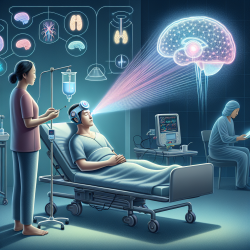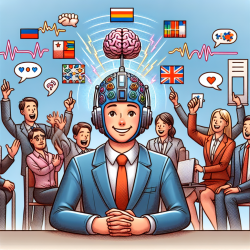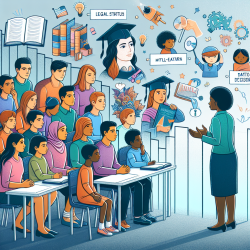Introduction
Non-invasive brain stimulation (NIBS) techniques, such as transcranial magnetic stimulation (TMS) and transcranial direct current stimulation (tDCS), have shown promising results in facilitating language recovery in patients with aphasia. This blog explores the findings from the research article "Non-invasive Brain Stimulation in the Treatment of Post-stroke and Neurodegenerative Aphasia: Parallels, Differences, and Lessons Learned," focusing on how practitioners can leverage these insights to enhance therapeutic outcomes.
Understanding Aphasia and Its Causes
Aphasia, a common cognitive disorder following a stroke, affects approximately 80,000 new individuals annually in the U.S. While stroke-induced aphasia results from acute, focal brain damage, primary progressive aphasia (PPA) arises from neurodegenerative diseases, leading to gradual language impairment. The mechanisms of injury and neuroplastic changes differ significantly between these two etiologies, influencing the effectiveness of NIBS techniques.
Non-Invasive Brain Stimulation Techniques
NIBS techniques have been explored as potential treatments for aphasia, with TMS and tDCS being the most studied. TMS involves using magnetic fields to stimulate nerve cells in the brain, while tDCS uses a low electrical current to modulate neuronal activity. Both methods aim to enhance neuroplasticity and facilitate language recovery.
Applications in Post-Stroke Aphasia
In post-stroke aphasia, TMS and tDCS have been employed to target specific brain regions to promote language recovery. Studies have shown that low-frequency TMS applied to the right hemisphere can improve language functions by inhibiting areas that interfere with language processing. Conversely, tDCS has been used to stimulate perilesional areas in the left hemisphere, enhancing language recovery through excitatory stimulation.
Challenges and Considerations
Despite the promising results, the reliability and efficacy of these techniques can vary. Factors such as lesion size, location, and the chronicity of the stroke can influence outcomes. Therefore, personalized approaches that consider these variables are crucial for optimizing treatment effectiveness.
Implications for Primary Progressive Aphasia
In PPA, the progressive nature of the disease presents unique challenges. Unlike post-stroke aphasia, where compensatory recruitment of brain regions is possible, PPA involves the degeneration of language networks. Therefore, the therapeutic strategy focuses on enhancing the activity of existing networks through excitatory stimulation, rather than remapping language functions.
Future Directions
The research highlights the need for larger, more comprehensive studies to further explore the potential of NIBS in treating aphasia. Understanding the underlying mechanisms of language representation and loss in both post-stroke aphasia and PPA will be crucial in refining these techniques and improving therapeutic outcomes.
To read the original research paper, please follow this link: Non-invasive Brain Stimulation in the Treatment of Post-stroke and Neurodegenerative Aphasia: Parallels, Differences, and Lessons Learned.










